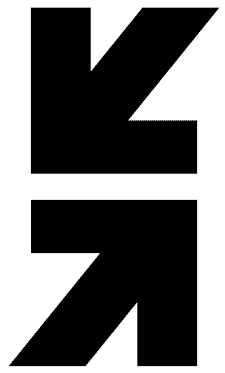


In January 2023, the world was introduced to a deeply chaotic new content format. On a hyper-stimulating bundle of screens, three videos play simultaneously: a clip from a TV show, a video game recording, and satisfying ASMR footage of sand being scooped, all frankensteined together. This cacophony of image and sound, painful for older viewers to watch, was ‘sludge content’ – and to many younger TikTok natives, it was old news.
Across the internet, moral panic ensued: Millennials felt old, Boomers felt scandalised, and Gens Z and Alpha… presumably didn’t look up from their many, many screens.
Sludge content joined a long cultural arc towards quicker, shorter, shallower content – a phenomenon that's both guiding and guided by shortening attention spans. Desperate to stop users from scrolling right past them, brands and creators are using anything from split-second edits to cliffhangers to aggressively grab attention. Even the most celebrated works of the year can’t hold focus, with box office hits like Barbie and Oppenheimer prompting Gen Z – yawningly ‘bored’ at the prospect of following a single narrative for two hours – fighting for the right to second-screen from the theatre.
But unlike its predecessors in overstimulation – the TikToks chopping feature-length films into snackable clips; the creators using a dizzying number of jump cuts – sludge content marked a perspective shift. As creators, brands, and the general public pondered how to captivate a generation whose viewership style had become totally alien, this triple-screened content put things into stark focus: if holding attention stays a game of one-upmanship, where do we go from here? Tens, hundreds, thousands of screens?
Rather than ramping things up, digital culture is taking a different tack. In an overstimulating content landscape, users, creators, and culture-leading brands are toying with other modes of bringing people in – ones that turn away from hyper-stimulation. From content that’s weirdly absorbing in its focus on grounded, ‘human’ scenes, to that which soothes instead of stimulates, or even entertainment that acts more like a background environment than a central focus, the most emergent entertainment is guiding viewers back to relaxed modes of focus.
@pandkourt The lemme event was so fun.💕❤️
♬
Instead of assaulting people’s attention, creators are helping people focus. This is done through soothing content that minimises sensory overload, like Roku City’s lo-fi looping animation, or low-intervention content that plays on human psychology to help people zone in.
@chrisbarnescomedy Couple moves to Roku City! #fyp #foryoupage #comedy #funny #sketchcomedy (@carolinebano ♬ original sound - Chris Barnes
In an over-stimulating, high production value, narratively gripping feed, there’s a fascination with content that, by contrast, focuses on the deeply average, grounded, ‘human’. There’s the viral Wes Anderson aesthetic, which uses the director’s signature style to make everyday scenes – lunch, train rides, uneventful wanders – into an artful visual experience. There’s also Keep the Meter Running – comedian Kareem Rahma’s TikTok series in which he hails NYC cabs and tells cabbies to take him anywhere, purely to spend time with the drivers.
@danikastiktok Everything is Wes Anderson coded #fyp #wesanderson #kamakura #japan #wesandersonaesthetic ♬ FANTASTIC MR FOX - amaramation
But it’s not all short attention spans and hyper edits for Gen Z. The rise in popularity of the video essay, which can run for over an hour, indicates a desire for in-depth and entertaining learning. This hyper attention or slow knowledge consumption, overlaid with memes and TikTok references, popular in geek culture leans into creativity and critical (deep) thinking. Popular creators like ContraPoints and Mina Le highlight the demand for engaging, long-form content.
Create experiences that enable moments of calm and focus. To promote the Nissan ARIYA car, the automotive brand partnered with beloved YouTube creator Lo-Fi Girl – known for her chill, lo-fi music streams – to communicate the powerfully peaceful vibe of the vehicle. Nissan created a 4-hour stream on YouTube, depicting Lo-Fi Girl driving the car while soundtracked by chill beats. In the comments, viewers praised the ad for being both immersive and working with passive attention, noting how they’ve let the video ambiently play for 20 minutes in the background of their daily lives.
Lean into new attention formats. ‘Mean Girls Day’ is celebrated annually on October 3rd, in homage to a moment in the movie where Lindsay Lohan’s love interest finally asks her the date. This year, Paramount released the entire movie on a devoted TikTok account – chopped up into 23 snackable, TikTok-length bits – for one day only. Time-bound (only around for 24 hours) and bite-sized (in short clips), the campaign demonstrated how to transform legacy media for modern attention spans.
@nfl TO THE HOUSE 🐆#jacksonvillejaguars #nfl #toystory #dariouswilliams ♬ original sound - NFL
Experiment with alternative narrative styles. Disney / Pixar and the NFL teamed up for the "Toy Story Funday Football”. This was a fully animated broadcast of the NFL's first London game of the 2023-24 season, which gave youngsters a chance to watch the game in “Andy’s Room” and in an environment that was aligned to viewing habits and passion points. The clever use of the tracking tech on the players allowed the game to be out in real time in the Toy Story universe.